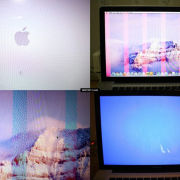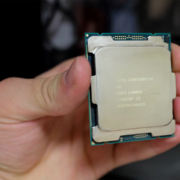Comcast to impose home internet data cap of 1.2TB in more than a dozen US states in 2021
from Comcast’s Press Room:
We have worked hard to keep all our customers connected during the coronavirus pandemic and will continue to do so by offering extended payment options and adjusting services and packages to meet customers’ budgets. We are keeping our 1.5 million public Xfinity WiFi hotspots open for free to anyone who needs to use them, including non-customers, through June 30, 2020. We are also continuing to provide 60 days of free Internet service to new, eligible Internet Essentials customers, also through June 30, 2020.
Here are the key elements of our data plan which will be rolled out to all of our service areas beginning January 1, 2021:
A Massive Amount of Data
- 1.2 TB is a massive amount of data. Enough to stream about 500 hours of HD video, videoconference for close to 3,500 hours in a month, watch nearly 1,200 hours of distance learning videos on Seesaw or Google Classroom, play more than 34,000 hours of online games, or stream more than 21,000 hours of music (not cumulative).
- About 95 percent of our customers use less than 1.2 TB every month – that’s even with COVID-level usage when most Americans are working and learning from home – which means that 95 percent of our customers will not be impacted.
Options for Everyone
For the roughly five percent of our customers who use more than 1.2 TB in a month, we are providing flexibility, value, and choice.
- We’ve introduced “xFi Complete,” which includes unlimited data, an xFi gateway, wall-to-wall WiFi, and our advanced cybersecurity service that protects connected devices from cyber threats and malware – all for $11 per month when you lease an xFi compatible gateway.
- xFi Complete customers also have access to xFi, a simple, digital dashboard for customers to set up and manage their home WiFi networks and see what devices are connected, set parental controls, get notifications about activities on the home network, and even pause WiFi access to certain devices during dinner or bedtime.
- For customers who don’t lease our gateway, they can purchase Unlimited Data for $30/month
- Customers who don’t subscribe to xFi Complete or Unlimited will receive one courtesy month in a 12-month period as a part of the plan.
- Customers can check their data usage anytime on the My Account usage meter. We’ll also notify customers when they hit 75 percent, 90 percent, and 100 percent of their allotted data usage via text message and our mobile app.
- As we complete the roll out of our national data plan in the Northeast*, we’re giving customers time to get to understand their usage. In those service areas, customers will not be charged for data overages or for xFi Complete/Unlimited Data until at least April.
A very small percentage of our customers drive a disproportionately large volume of traffic on our network. In fact, five percent of our residential customers make up more than 20 percent of our network usage. For that small set of customers who use more than 1.2TB of data in a month, we have a number of unlimited options for less money.
At Comcast, we double the capacity of our network every 18-24 months and have invested more than $12B since 2017 to support the rapid increase in usage particularly by our super user customers. We will continue to make significant investments in our network so that all our customers have all the speed and capacity they need – whether they use 500 GBs or subscribe to unlimited.
As our customers’ use of the Internet grows, we will continue to evaluate the pricing and packaging of our services to ensure we are meeting their needs.
*Northeast service areas include the states of CT, DE, MA, MD, ME, NH, NJ, NY, PA, VA, VT, WV, the District of Columbia, and parts of NC and OH.
source: https://corporate.comcast.com/stories/our-nationwide-data-plan






